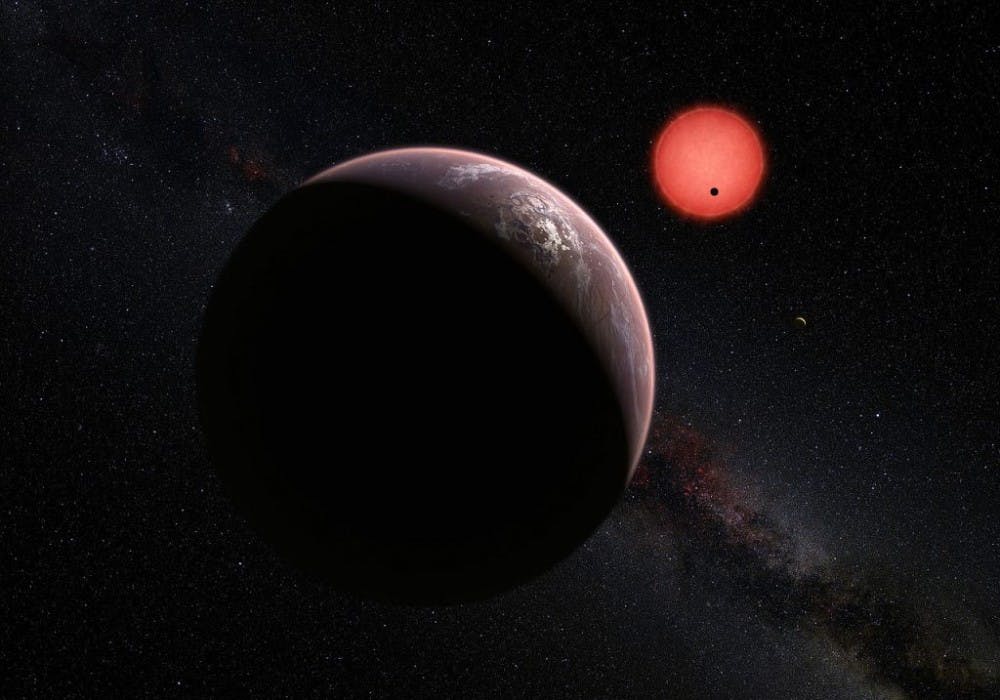A recent study published in the journal Nature reported that there are at least seven Earth-sized planets orbiting a star about 40 light years away. NASA and European astronomers found that these planets are all similar to Earth in that they are similarly sized and their climate is relatively temperate.
The star that the planets orbit is TRAPPIST-1. It is an ultra-cool dwarf star, which means it has an effective temperature under 2700 K (2430 degrees Celsius or 4400 degrees Fahrenheit.) In May of 2016, researchers discovered three planets that orbit TRAPPIST-1.
All seven planets are very close to one another. In fact, all of them orbit in a space that is smaller than one-fifth the distance from Mercury to the sun.
Astronauts were able to estimate the masses of the planets and found that they are most likely rocky planets, similar to Earth and Mercury because their masses are too high to be considered gaseous planets. Although each of these planets receives 200 times less light than we get from the sun, three of the seven planets are in fact located in the habitable zone of the star. In fact, there could be water on the surfaces of these planets.
“This is the first time that so many planets of this kind are found around the same star,” Michaël Gillon, lead study author and astronomer at the University of Liège in Belgium, said.
Scientists studied the seven new planets utilizing a telescope called TRAPPIST (TRAnsiting Planets and PlanetesImals Small Telescope). Furthermore, space-based telescopes like Spitzer have allowed the researchers to determine the orbital periods, distances from the star, radii and masses of the different planets.
The astronauts have labeled each of the planets from ‘a’ through ‘f’ and have discovered that the planet TRAPPIST-1f is the most likely to support life. TRAPPIST was used to view changes in brightness as well as shadows.
Furthermore, by observing starlight in the planet’s atmosphere, the researchers found that the stars had atmospheres similar to that of earth.
“I think we’ve made a crucial step towards finding if there is life out there,” Amaury Triaud, one of the study authors and an astronomer at the University of Cambridge, said. “I don’t think we have yet found the right planets to discover and find out if there is [life]. Here, if life managed to thrive and releases gases similar to what we have on Earth, we will know.”
In the future, researchers are looking towards determining the exact composition of the atmosphere of each of the planets and finding whether there is liquid water on the surface.
A distance of 40 light years (or 235 trillion miles) means it would take astronauts millions of years to reach the star system. However, researchers are hopeful that advanced technology will help them reach the planets faster.
“This discovery could be a significant piece in the puzzle of finding habitable environments, places that are conducive to life,” said Thomas Zurbuchen, associate administrator of NASA’s Science Mission Directorate. “Answering the question ‘are we alone?’ is a top science priority, and finding so many planets like these for the first time in the habitable zone is a remarkable step toward that goal.”





